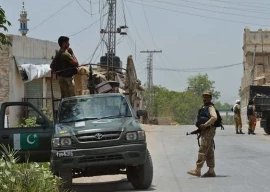
But before taking a deeper look into the pros and cons of setting up a free trade area straddling the Durand Line, let us take a quick look at the current situation. The current trade between Afghanistan and other countries is estimated to be more than $5 billion a year. And despite being a terror-infested area, the Durand Line crossing could not prevent Pakistan from becoming Afghanistan’s biggest trading partner, clocking over 25 per cent share of all its imports and more than 33 per cent share of all its exports. Trade in goods smuggled into Pakistan once constituted a major source of revenue for Afghanistan. Many of the goods that were smuggled into Pakistan had originally entered Afghanistan from Pakistan under the Afghan Trade and Transit Agreement. Pakistan clamped down on the types of goods permitted duty-free transit in 2003, and introduced stringent measures and labels to prevent such practices. The two countries recently signed into law a new Afghan-Pak Trade and Transit Agreement (APTTA), which allows their shipping trucks to transit goods within both nations. A revised US-sponsored APTTA allows Afghan trucks to transport exports to India via Pakistan through the Wagah crossing point, but this clause of the agreement has remained inoperative so far. About 500 shipping containers of trade goods enter Afghanistan via the Torkham and Wesh-Chaman border crossings on a daily basis. The Afghan Customs Department (ACD) has started using an automated system for customs data. By March 2015, the ACD will also install systems for real time monitoring of customs operations and cross-border custom-to-custom data exchange with neighbouring countries.
The main exports of Afghanistan include opium, fruits and nuts, hand-woven carpets, wool, cotton, hides and pelts, as well as precious and semi-precious gems. Its imports include machinery and other capital goods, food, textiles and petroleum products. The Afghan economy has always been agricultural. The country is known for producing some of the finest vegetables and fruits, especially pomegranates, apricots, grapes, melons, mulberries and pistachio, but it currently lacks proper marketing and processing plants. Wheat and cereal production is Afghanistan’s traditional agricultural mainstay. The northern regions around Mazar-e-Sharif are the home range for the Karakul sheep.
Afghanistan is also endowed with a wealth of natural resources, including extensive deposits of natural gas, petroleum, coal, marble, gold, copper, chromite, talc, baryte, sulphur, lead, zinc, iron ore, salt, precious and semi-precious stones, many rare earth elements, coloured stones and gemstones, emerald, ruby, sapphire, garnet, lapis, kunzite, spinel and tourmaline. Some believe that the untapped minerals are worth at least $3 trillion. Kabul signed a copper deal with China (Metallurgical Corp. of China Ltd.) in 2008, involving investment of $2.8 billion by China. In December 2011, Afghanistan signed an oil exploration contract with the China National Petroleum Corporation for the development of three oilfields along the Amu Darya River.
And now let us see how a free trade area can be established across the Durand Line. A free trade area is the region encompassing a trade bloc, whose member countries have signed a free trade agreement. Free trade agreements eliminate tariffs, import quotas and preferences on most (if not all) goods and services traded between the member countries. The best example of such an agreement between two asymmetrical countries, signed between Sri Lanka and India, is based on the negative list approach, under which each country extends tariff concessions/preferences to all commodities except those on the negative list. For designing a win-win free trade agreement between a small country like Afghanistan and a relatively bigger one, like Pakistan, one would need to take the asymmetry between the two into account and build special and differential treatment for the relatively smaller country through a longer negative list, a longer trade liberalisation schedule and favourable rules of business.
Published in The Express Tribune, November 19th, 2014.
Like Opinion & Editorial on Facebook, follow @ETOpEd on Twitter to receive all updates on all our daily pieces.
COMMENTS (6)
Comments are moderated and generally will be posted if they are on-topic and not abusive.
For more information, please see our Comments FAQ










































@Roc: 2nd richest in the world to be exact! The mining industry will provide jobs and so will the energy supply line for Russian exports. it is the ugly American boots which have hitherto prevented the setting up of industries in the heartland of Afghanistan thereby forcing a continuous brain drain from the land locked country. Neither Pakistan nor Afghanistan breed terrorism but imperialism and colonialism and foreign occupation does. The author very rightly points out to the trade opportunities and I have merely tried to make the dotted lines more transparent.
Rex Minor
@Rex Minor:
Surely your being a bit too optimistic, "richest copper mines", even if they exist the bulk of the money will be going to foreign investor's pocket, and even that only if investors decide to take the risk to invest in Afghanistan. If mines were free money Pakistan would have already been an "eldorado" due to Reko Diq.
I wrote a long time ago about how a different Pakistan would impact Asia and itself. Here's the article:
http://theweirdindian.blogspot.com/2010/11/asia-with-different-pakistan.html
Pakistan has the potential if it leaves the obsessions detailed in this article behind.
A great read! Your title says it all but who is listening or reading?
A very well written educated article about the little country which is soon to become eldorado in the region not only because of its richest copper mines but also the hub for Russion exports of energy into the region. Pakistan future source of energy is in Afghanistan at hearbeat distance and unless Pakistan political leadership does not rid itselve of the army cloak, it could live another missed opportunity.
Rex Minor
"through a longer negative list"? Is it a typo? Don't we need shorter negative list to boost trade?